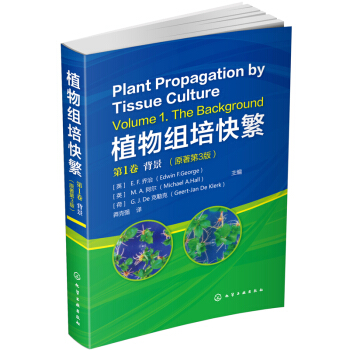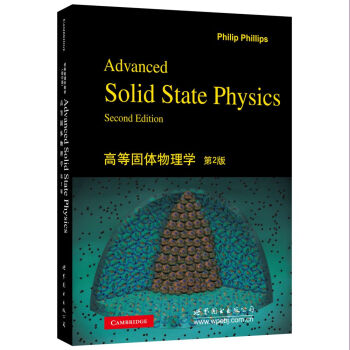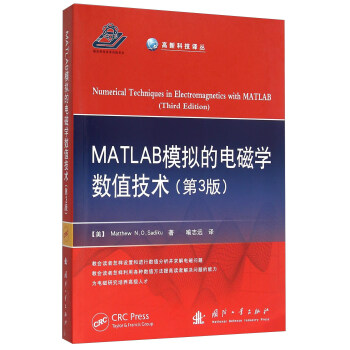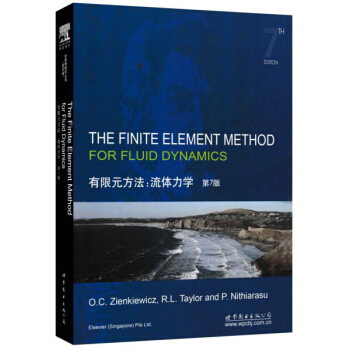![代数曲线几何(第2卷 第1分册) [Geometry of Algebraic Curves Volume 2 Part 1]](https://pic.windowsfront.com/11593483/54a3b10aN485b26a1.jpg)

具体描述
内容简介
《代数曲线几何(第2卷 第1分册)》是英文版的代数曲线的书。代数几何是现代数学的一个重要分支学科。它的基本研究对象是在任意维数的(仿射或射影)空间中,由若干个代数方程的公共零点所构成的集合的几何特性。这样的集合通常叫做代数簇,而这些方程叫做这个代数簇的定义方程组。内页插图
目录
Guide for the ReaderList of Symbols
Chapter Ⅸ.The Hilbert Scheme
1.Introduction
2.The idea of the Hilbert scheme
3.Flatness
4.Construction of the Hilbert scheme
5.The characteristic system
6.Mumford's example
7.Variants of the Hilbert scheme
8.Tangent space computations
9.Ci families of projective manifolds
10.Bibliographical notes and further reading
11.Exercises
Chapter Ⅹ.Nodal curves
1.Introduction
2.Elementary theory of nodal curves
3.Stable curves
4.Stable reduction
5.Isomorphisms of families of stable curves
6.The stable model, contraction, and projection
7.Clutching
8.Stabilization
9.Vanishing cycles and the Picard-Lefschetz transformation
10.Bibliographical notes and further reading
11.Exercises
Chapter ⅩⅠ.Elementary deformation theory and some applications
1.Introduction
2.Deformations of manifolds
3.Deformations of nodal curves
4.The concept of Kuranishi family
5.The Hilbert scheme of v-canonical curves
6.Construction of Kuranishi families
7.The Kuranishi family and continuous deformations
8.The period map and the local Torelli theorem
9.Curvature of the Hodge bundles
10.Deformations of symmetric products
11.Bibliographical notes and further reading
Chapter ⅩⅡ.The moduli space of stable curves
1.Introduction
2.Construction of moduli space as an analytic space
3.Moduli spaces as algebraic spaces
4.The moduli space of curves as an orbifold
5.The moduli space of curves as a stack, Ⅰ
6.The classical theory of descent for quasi-coherent sheaves
7.The moduli space of curves as a stack Ⅱ
8.Deligne-Mumford stacks
9.Back to algebraic spaces
10.The universal curve, projections and clutchings
11.Bibliographical notes and further reading
12.Exercises
Chapter ⅩⅢ Line bundles on moduli
1.Introduction
2.Line bundles on the moduli stack of stable curves
3.The tangent bundle to moduli and related constructions
4.The determinant of the cohomology and some applications
5.The Deligne pairing
6.The Picard group of moduli space
7.Mumford's formula
8.The Picard group of the hyperelliptic locus
9.Bibliographical notes and further reading
Chapter ⅩⅣ.Projectivity of the moduli space of stable curves
1.Introduction
2.A little invariant theory
3.The invariant-theoretic stability of linearly stable smooth curves
4.Numerical inequalities for families of stable curves
5.Projectivity of moduli spaces
6.Bibliographical notes and further reading
Chapter ⅩⅤ. The Teichmuller point of view
Chapter ⅩⅥ. Smooth Galois covers of moduli spaces
Chapter ⅩⅦ. Cycles in the moduli spaces of stable curves
Chapter ⅩⅧ. Cellular decomposition of moduli spaces
Chapter ⅩⅨ. First consequences of the cellular decomposition
Chapter ⅩⅩ. Intersection theory of tautological classes
Chapter ⅩⅩⅠ. Brill-Noether theory on a moving curve
前言/序言
用户评价
提到《代数曲线几何(第2卷 第1分册)》,我的第一反应是它可能蕴含着一种非常抽象且深刻的数学思想。我不确定它是否会涉及具体的计算实例,但肯定会建立在一系列严谨的定义和定理之上。我设想,这本书就像一座通往数学殿堂的阶梯,每一级台阶都代表着一个新的概念或证明。我最感兴趣的是,它会如何连接代数和几何这两个看似独立的领域,又是如何利用代数的工具来理解和刻画几何对象的。我期望它能清晰地解释一些关键的数学构造,并提供必要的背景知识,以便我能够理解更复杂的定理。我希望这本书能够帮助我建立起对代数曲线几何的整体认知框架,而不是仅仅停留在零散的知识点上。
评分这本书的标题,《代数曲线几何(第2卷 第1分册)》,本身就像一个精心设计的谜语,勾起了我无限的求知欲。我猜想,它可能不会直接告诉你所有问题的答案,而是更侧重于引导读者如何去思考、去探索。也许它会从一些经典的代数曲线入手,比如椭圆曲线,然后层层深入,揭示它们在不同几何环境下的行为。我希望能看到一些关于代数曲线分类的最新进展,或者是一些在代数几何研究前沿的工具和方法。如果书中能穿插一些历史性的回顾,讲述这些概念是如何一步步发展起来的,那就更妙了。我会把它当作一本工具书,在遇到代数几何中的难题时,翻阅它来寻找灵感和解决方案。我希望它能教会我如何运用抽象的代数语言来描述和分析几何对象,以及如何通过几何直觉来指导代数的运算。
评分《代数曲线几何(第2卷 第1分册)》,光看名字就觉得它不是那种随便翻翻就能掌握的书。我猜想,它可能需要读者具备一定的代数几何基础,并且愿意投入时间去消化吸收。我很好奇,在这卷的第一分册中,作者会重点关注哪些方面的代数曲线几何?或许是一些关于代数曲线的奇异点处理,或者是一些与代数几何分类理论相关的深入探讨。我希望这本书能给我带来全新的视角,让我看到代数曲线几何在其他数学分支,甚至物理学中的应用。我期待它能以一种既有启发性又具有挑战性的方式呈现内容,让我不仅能学到知识,还能培养解决复杂问题的能力。
评分这本书的名字着实吸引人,《代数曲线几何(第2卷 第1分册)》,光是听着就充满了深邃的数学韵味。虽然我还未真正翻开它,但仅凭书名,我脑海中已经勾勒出一幅宏伟的知识图景。第二卷,这暗示着它在前一部分的基础上,将带领读者进入更复杂、更精妙的代数曲线世界。而“第1分册”,则进一步细化了内容的层次,预示着这一卷会分多个部分深入探讨。我对其中可能涉及的黎曼曲面理论、模空间、或者曲线的缠绕方式等概念充满了好奇。想象一下,那些在抽象空间中扭曲、折叠、又相互交织的曲线,它们背后隐藏着怎样的代数结构和几何规律?这本书,大概就像一把钥匙,能够解锁我对这些奥秘的理解,让我得以窥见数学家们构建的精致理论体系。我尤其期待它能够提供清晰的阐释和严谨的证明,引导我逐步攀登代数几何的知识高峰。
评分《代数曲线几何(第2卷 第1分册)》,这个名字听起来就带着一股不容小觑的气势。我脑海里浮现的,不是那种轻描淡写的入门介绍,而是需要投入大量精力去啃读的严谨学术著作。我非常好奇,在第二卷的第一分册里,作者会选择哪些具体的主题来深入剖析?是关于代数曲线的某个特定性质,还是某个重要的计算方法?我希望这本书能涵盖一些我尚未接触过的,但又至关重要的代数几何概念,例如,与代数几何的联系,或者一些更高级的同调代数工具在曲线研究中的应用。我想象着,这本书就像一位严厉但公正的导师,不会轻易放过任何一个细节,要求读者做到精确理解和融会贯通。我期待它能挑战我的思维极限,拓展我的学术视野。
评分很经典的书,非常值!
评分符合介绍的功能,很好
评分书收到了,谢谢书收到了,谢谢
评分还可以还可以还可以还可以
评分非常好的代数几何书,就是太贵了,这个是给朋友买的
评分好好好好好好好好好好好好
评分一如既往的好,支持购买哦
评分好书!京东送货速度太给力!
评分一般啦一般啦一般啦一般啦
相关图书
本站所有内容均为互联网搜索引擎提供的公开搜索信息,本站不存储任何数据与内容,任何内容与数据均与本站无关,如有需要请联系相关搜索引擎包括但不限于百度,google,bing,sogou 等
© 2025 book.coffeedeals.club All Rights Reserved. 静流书站 版权所有




![国外电子与通信教材系列:概率、统计与随机过程(第四版) [Probability, Statistics,and Random Processes for Engineers,Fourth Edition] pdf epub mobi 电子书 下载](https://pic.windowsfront.com/11675949/552b802cNde4c2b8b.jpg)



![自然史·动物王国 [Le Buffon Choisi de Benjamin Rabier] pdf epub mobi 电子书 下载](https://pic.windowsfront.com/11835643/566a9ce4Nbd3c0442.jpg)



![数学与经济(珍藏版) [Mathematics And Economy] pdf epub mobi 电子书 下载](https://pic.windowsfront.com/11883755/56f8fee3Ncde30f1e.jpg)


![仰望量子群星:20世纪量子力学发展史 [Looking up at the quantum stars The history of quantum mechanics of 20th century] pdf epub mobi 电子书 下载](https://pic.windowsfront.com/11920392/572ab346N1dd5f0e9.jpg)



![时间序列与多元统计分析 [Time Series And Multivariate Statistical Analysis] pdf epub mobi 电子书 下载](https://pic.windowsfront.com/11988051/5805e8edN29a785e9.jpg)
